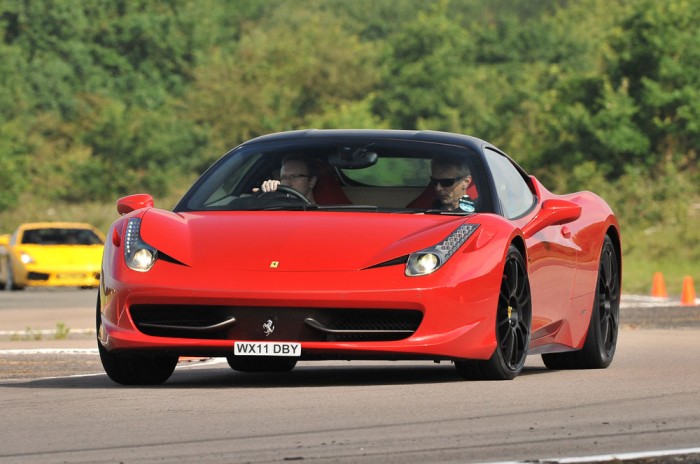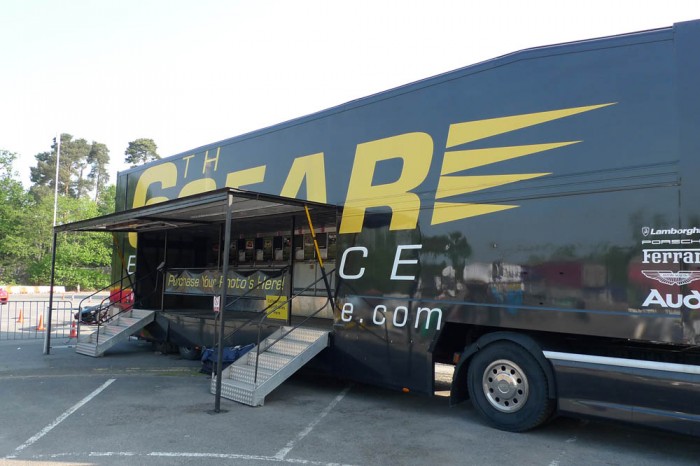With the chance of a quiet moment in the busy supercar event photography season, we chat to the head of MI Images, Marc Bevan about some of the important things that happen behind the scenes of a successful supercar photography operation and how he keeps his team of hard working photographers and event staff on target and how he manages the high workload of his Nikon camera equipment.
Q. From a car photography point of view, your business has unique requirements. Unlike advertising or editorial, what would you say the main needs of your photography customers are?
As our car photography is predominately based around capturing people driving cars, the main objective is to capture a clear images of the person drive behind the wheel. We also need to capture a nice shot of the car, but the client demands clear shots of the driver over anything else.

Q. Your cameras must get a hard life. What equipment, cameras and lenses do you shoot with and what sort of durability do you need?
As our work is all out doors, the British weather cant take it’s toll on my photographers and the kit they use. Supercar driving events don’t stop because of some rain, so we have to be able to operate whenever our supercar clients are on track. We have a stock of 10 Nikon camera bodies, ranging from older D2 series cameras up to D3 series, all weatherproofed. All of the equipment is owned and maintained by MI Images as we like to keep in touch with the number of shots each camera is up to.
Q. Why Nikon?
No other reason than once you start on a path and build up a stock of lenses, changing brands can become expensive just for the sake of a few months technical advantage, before your chosen brand brings out their latest camera enhancements. We match the gear to the job and we don’t need massive megapixel resolution. Our work requires to shoot jpeg and to print at no larger than 12×8.
As well as the 10 Nikon bodies we use the Nikon WT2 , WT4 WiFi transmitters to allow us to transmit the shots from photographer back to the sales truck. We use several prime telephoto lenses including several Nikkor 300mm 2.8’s. They are expensive, but we need multiple lenses as we are required to cover multiple events at the same time.
All of the photographs are then sent back to a specially constructed HGV truck. Inside this truck are 10 client viewing screens. The truck is fitted with its own print lab and sales station allowing customers to pick images and send them for print, then pay and collect their order just minutes later. Using this system, we have been able to serve over 600 drivers, plus their friends and families over a single day on track.

Q. How many frames will your cameras shoot on a busy day?
We regularly shoot 7,000 photographs a day at most events. In 2012 our camera fleet shot just short of 1 million photographs.
Q. What sort of workflow do you use? Most car photographers shoot RAW at maximum resolution and process the files later, but don’t do that. Why is that?
Our workflow is based around what I have dubbed the “10 minute rule”! We have 10 minutes from shooting the image of the car and driver on track to having it ready for the client to view, any more and the sale will be lost! As the majority of our clients are people that have driven their dream car they want to see pictures of themselves once they’ve finished their driving experience. Our aim is to have their photos ready for viewing as they leave the car!
This is the reason that all our work is shot in jpeg, to speed up image transfer from the camera to the viewing station. We have no post production, our photographers need to shoot the image as the picture will to be viewed by the buyer, like it used to be back in the days of film! Our image management software has been developed by us for this very task and has been enhanced in-house to allow guests to find their own images very quickly amongst the vast amount we shoot.
Q. Do you only offer print sales?
No. We also allow our clients to purchase the jpeg files to use however they wish, with the type of photography we are doing you have two choices, offer the client the files on the day for an extra fee – takes seconds longer than producing just a print. The digital images are supplied instantly on CD. The event organisers love it, because we actively encourage sharing digital images on social media outlets such as Twitter and Facebook. 90% of our clients take the option to buy the digital version of the images as well as the print.
Q. It seems like even though quality is important, you’re not precious about the images once the event is over. What happens to all of the pictures you take?
Our photographs have an instant appeal and people want them right then, but after the event the moment is gone and the excitement and adrenaline has gone, so the impulse purchase moment has passed. We receive emails from customers asking for images after the event, so for 2013 that’s something we’re introducing. Previously, we’ve taken the view that uploading more than 7,000 images per day from a busy event just doesn’t make sense, but with customers asking for the service, we’ll be adding it. The key thing will be making such a huge amount of images easily searchable by clients, but we think we’ve found a solution.
Q. You wouldn’t think image theft was a problem for you, but you still have hassles sometimes?
With our workflow and not using web galleries to share and display our work, we have minimised the risk of commercial images theft and copyright infringement. However with the modern mobile photo (camera phone) we have seen a massive increase in image theft from our client viewing screens. Modern society is unaware in the most part that grabbing a photograph from our viewing screens using your camera phone is still theft!
Q. What would be the ideal technology advancement for you that would make your job easier and how do you see the event photography industry moving over the next few years?
Event photography and the industry can already move forward with today’s technology, you just need to be more open minded to the possibilities. I’m a photographer first and foremost but I very rarely get to shoot anymore! What we’re trying to do with MI Images is bring a professional element into the workflow of event photography. We see the main advances will be more based around image tagging, sorting and retrieval of images quickly, rather than in camera technology.
For 2012 we have pioneered a system that automatically sorts each and every photograph we shoot on track into that client’s folder. We developed this system in house and it isn’t available off the shelf. Being able to tell that which cars any the driver on any particular day were driving and at a particular time has even further streamlined our workflow providing a better client experience.
I see the single photographer and small operators starting to struggle unless they keep investing in the latest technology. We have spend approximately £100,000 on our systems, cameras, printer etc. Weekend warriors just don’t have the same impact and miss the fact that the photograph and its quality are just one very small part of the jig saw puzzle. The workflow and delivering the customer a quality image quickly is the most important part of the sales process.
Q. Plans for 2013?
As well as the online print ordering service, we’re being asked by equestrian event organisers to discuss adapting our ‘supercar photography’ business model into the larger equestrian events. We think that if scaled correctly it can work very well and it’s something we’re quite excited about.
Leave a Reply